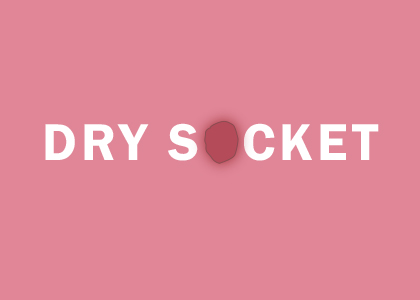Can Dry Socket Be Deadly?
 The dreaded words of warning for anyone who has a tooth extraction: dry socket. A dry socket is a painful complication after a routine treatment like an extraction, but it can be avoided if you’re careful, and it definitely won’t kill you. Read more below from the Carson City dentists of Advanced Dentistry by Design about what a dry socket is, how to avoid it, and how to treat it if it happens to you.
The dreaded words of warning for anyone who has a tooth extraction: dry socket. A dry socket is a painful complication after a routine treatment like an extraction, but it can be avoided if you’re careful, and it definitely won’t kill you. Read more below from the Carson City dentists of Advanced Dentistry by Design about what a dry socket is, how to avoid it, and how to treat it if it happens to you.
What is a Dry Socket?
Like any part of your body, your mouth has its own way to heal and recover itself after accidents or treatments. If you have a tooth removed, your gums will make a blood clot over the hole where the tooth was. The spot in your gums where the tooth once was is called the socket. This clot, like a scab, protects the vulnerable tissues underneath and aids healing.
If the blood clot gets removed (usually by accident), it leaves a painful and fresh wound. Where the tooth once was is now bare bone and nerves, and it hurts when they are exposed. Dry sockets increase your chance of infection and will increase your pain and prolong your healing after surgery.
Symptoms & Causes of Dry Socket
A dry socket is the most common complication following oral surgery such as tooth extraction. If you have had an extraction, the symptoms of dry socket include:
- Losing some or all of the blood clot from the socket
- Intense pain in the socket, as well as pain radiating up into other parts of your mouth and face
- Visible bone in the socket
- Unpleasant taste and odor
Things that put you at risk for developing a dry socket include:
- Smoking and tobacco use (both the chemicals and the physical process are likely to compromise the blood clot on the socket)
- Drinking through a straw (this action causes a suction in the mouth that can loosen the blood clot)
- Oral contraceptives (high estrogen level may delay the healing process of the first blood clot)
- Tooth or gum infection (infection around the socket can delay healing)
- Failure to care for the wound after surgery (be careful to follow your dentist’s instructions once you return home)
- If you’ve had a dry socket in the past
Treating a Dry Socket
Dry sockets can be very painful and will prolong your healing process. Some amount of pain is to be expected after tooth removal, but if you’re in serious pain and/or experiencing any of the symptoms of a dry socket, you should call us immediately.
The dentist can treat your dry socket by:
- Cleaning the wound
- Applying topical numbing medicine for instant relief
- Applying medical bandages to protect the socket
- Prescribing pain medication
- Giving you clear instructions on cleaning and dressing the socket at home
Pain from the dry socket will likely subside within a few days, but the dry socket will take some time to fully heal. Be sure to drink lots of water in the days following surgery to help yourself recover and eat only soft food per your dentist’s instructions. Continue to brush your teeth after tooth removal, even with a dry socket, but be very careful around the socket area.
Advanced Dentistry by Design is here to help with any dental needs you have. Make an appointment today if you have more questions about dry socket or any other oral health concern.
The content of this blog is not intended to be a substitute for professional medical advice, diagnosis, or treatment. Always seek the advice of qualified health providers with questions you may have regarding medical conditions.
Advanced Dentistry by Design
403 W. NYE LANE, STE A
CARSON CITY, NV 89706
775.400.2533
https://goo.gl/maps/ePvumusP4kAVQScAA
